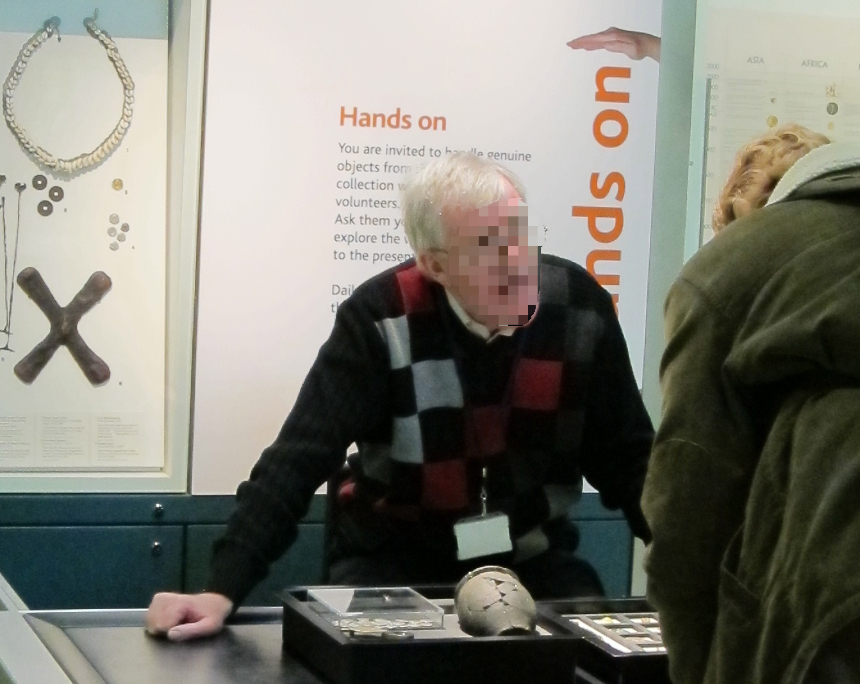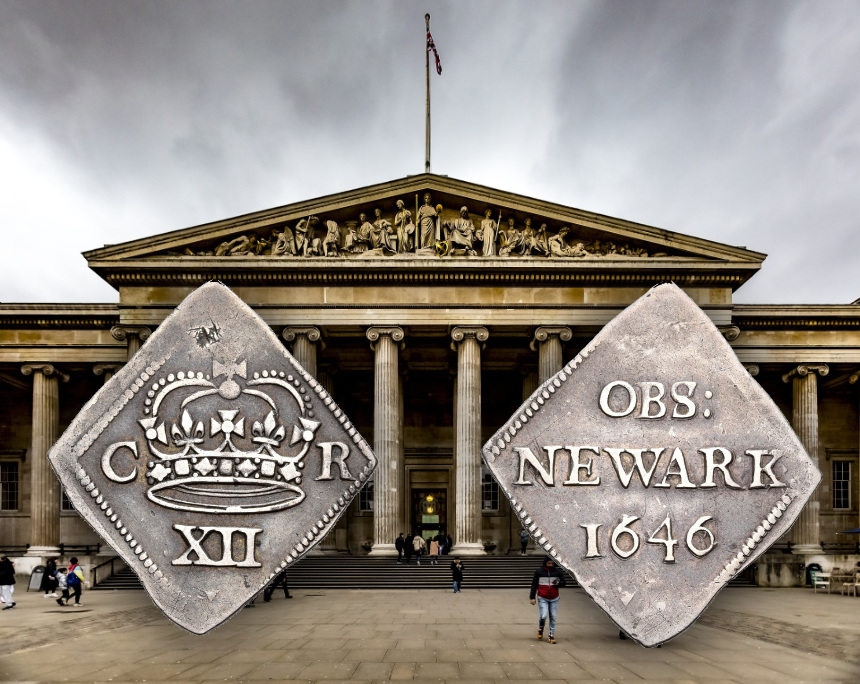Hands-On: A Successful Concept
The thing is that the coin was not stolen from a display case, but from a hands-on table where volunteers explain the history of historical objects to visitors. Visitors are not only allowed to touch the pieces, they are even encouraged to take them into their own hands. Of course, the coins on these tables were carefully selected. They are mostly common, historically interesting and comparably inexpensive objects. Often they are not even from the museum’s collection but were bought on the market specifically for this purpose. This is probably also true of the stolen coin. In any case, it had not been inventoried. Poorly preserved pieces of this type are available for less than 1,000 euros.
The hands-on project of the British Museum was launched in January 2000. It is a concept that has been imitated in many museums, giving visitors direct access to historical objects. The idea is to allow visitors to hold historical objects in their hands in order to grasp history in the truest sense of the word. Some museums, but also other institutions such as zoos, have adopted this approach. You may have already seen such a hands-on station yourself. Usually, it is a table with various objects on it. A volunteer sits behind the table and hands the objects to you. While you look at them, the volunteer will explain to you what you see.
Hands-on tours are particularly popular in numismatics because this is a way to reach people who do not normally come into contact with art / numismatics / archaeological objects. A staff member of the BM once told me that it was always a miracle to him how easily he was able to reach pupils with a migratory background with the help of coins. These pupils were often not among the best in their class, but at his table they could easily read the inscriptions on coins in Arabic, Chinese or Thai. This enabled them to experience themselves in a completely new position in the class – that of an expert. This can be a real confidence boost.
The hands-on project could therefore be described as an inclusion project. The fact that Ilé Sartuzi used this very project to make headlines for himself by talking about the “problem of universal museums” is just sad.

The volunteer-led tables of the hands-on project. Photo (2011): UK
Between Protecting Objects and Creating Accessibility for Visitors
Every museum today is struggling to keep the balance between attracting visitors on the one hand and protecting objects from these very visitors on the other hand. 99.99999% visitors want nothing more than to enjoy the beauty of the objects. But there is a small minority of people who see museum objects as a means of enriching themselves – either financially or, like Ilé Sartuzi, in another way. Protecting the collection from these people requires security measures that are often beyond the museum’s budget.
Hands-on tables are a compromise. They do not make theft impossible but they do make it harder for thieves to steal objects. In fact, Ilé Sartuzi was caught when he first tried to remove a coin. Only his second attempt on the next day was successful.
Whatever your opinion of his actions, the success of hands-on tables far outweighs the potential damage caused by the loss of individual pieces. For many people, the feeling of holding a coin in your hands that is directly linked to historical events is an experience that changes their worldview.
And that brings us to the existential importance of museums for our cultural identity. Ilé Sartuzi’s action only shows that he has not understood that London is home to a multicultural society whose diverse roots can be found in the British Museum. The fact that Ilé Sartuzi only saw a single English coin on the hands-on table is certainly not due to the fact that the British Museum, as he says, is “a foundational part of the colonial, imperialist system” but to the fact that the table is not only aimed at visitors of English origin.
What Does Ilé Sartuzi Stand to Gain from This Theft?
So, what did Ilé Sartuzi’s theft reveal? Nothing at all. Everyone involved is well aware that it is possible to steal something from the hands-on table. So, were his actions then a protest against the colonial past accumulated in the British Museum? To be honest, I am really tired of such arguments. After all, climate activists do not call it “art” either when they throw mashed potatoes at a Monet painting.
In the end, the project only achieved one thing: get the name of someone who would like to be an artist into the media. His theft increases his chances at becoming an artist because it increases Ilé Sartuzi’s market value.
Nowadays it is difficult to distinguish between artists and those who just call themselves that. That is why the market, i.e. the prices paid for works of art, decides who is a great artist, a minor artist or no artist at all. Any public attention to a work of art helps – be it an exhibition or, in this case, a theft.
Personally, I would have found it more interesting to see a protest against the mechanisms of the art market.









